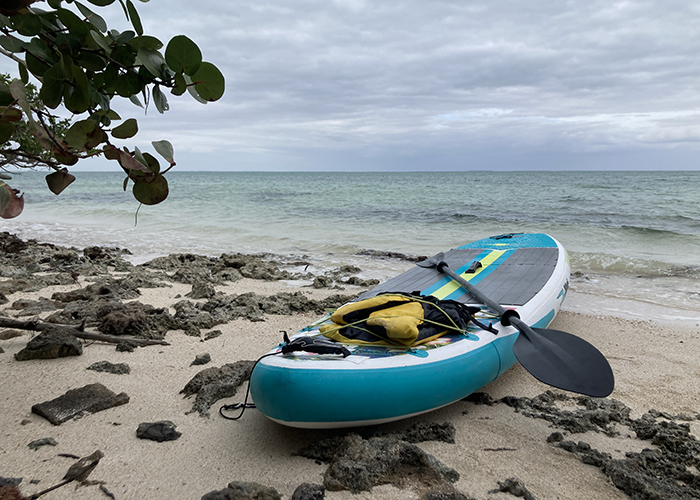 Previous Day |
Key West, FL → Homestead, FL 153.0 mi (246.2 km) |
 Next Day |
Let’s make a splash, everyone!
My head sure was sloshing after another bright-and-early wakeup and super long drive from Key West this morning! It’s all because I didn’t account for how popular national parks would be in the week leading up to Christmas, and I had to choose my day in Biscayne National Park based on how much immersion I was going to get, literally! This is a mostly aquatic park, so I was going to need to get creative if I wanted to see some of its wonders. Unfortunately, that meant choosing the week’s only available Sail, Paddle, Snorkel, and Island Visit, which left the morning after my Dry Tortugas tour, 130 miles away! Well, we do what we must for adventure!
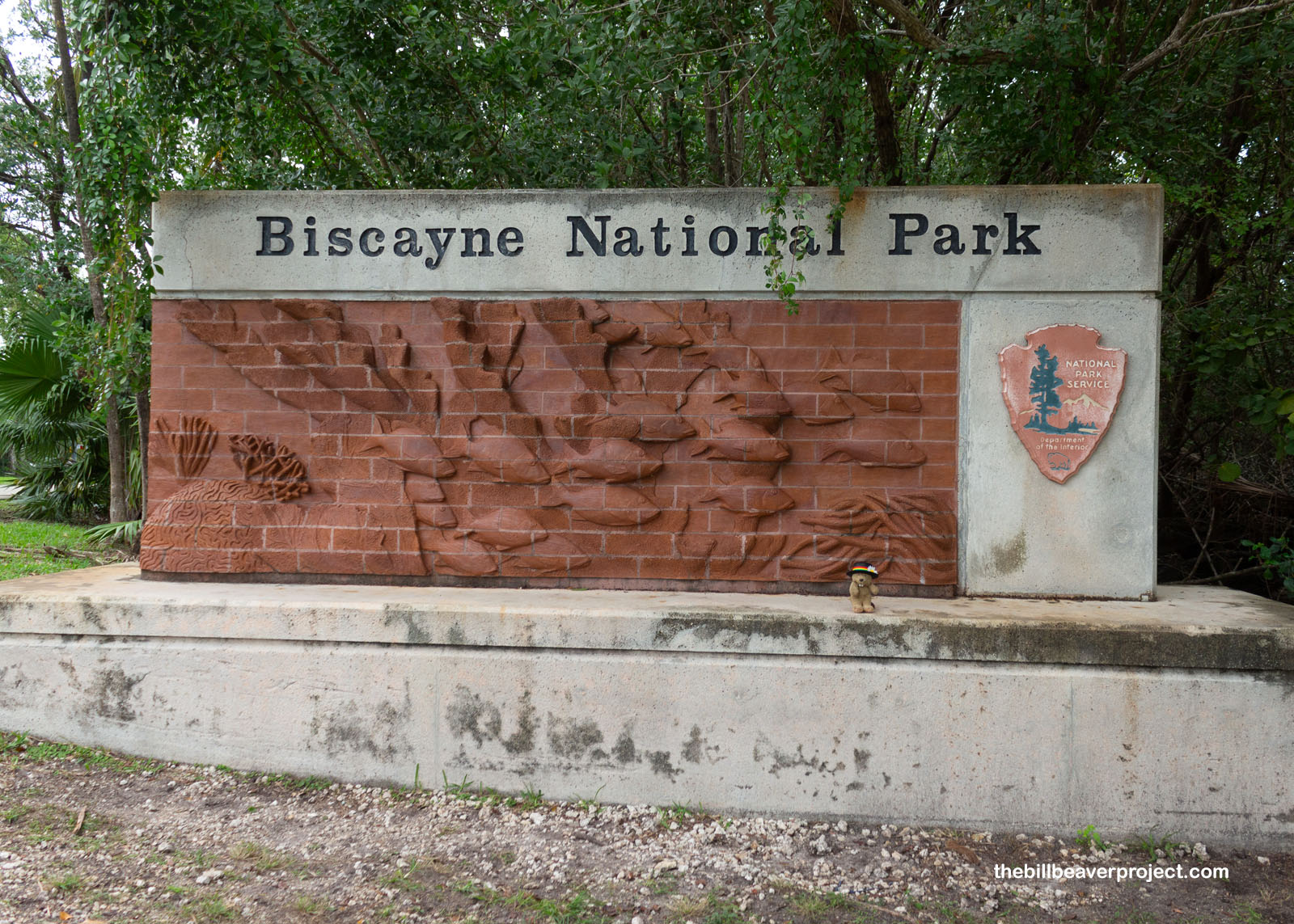 |
Luckily for me, I was not running late by any means. There was a group of college buddies from Shanghai, led by one Clarkson, who signed up for the Sail, Paddle, and Snorkel tour… without any swimsuits! Luckily, Captain Castle of the Morning Dance was super organized and got everyone in ship shape for a mostly on time departure! This plucky sailing vessel was practically an ocean-going apartment, with a living room, bunks, bathrooms, and a kitchen, which I thought was neat! We motored out through the Convoy Point Channel, a specially carved escape route from Homestead Bayfront Park into Biscayne Bay! See, this whole area is super shallow, which makes it an excellent fish nursery but not always great for boating! We weren’t in a barge by any means, but had we drifted too close to any of the twelve pairs of pylons lining the channel, we could have easily run aground on sand bars!
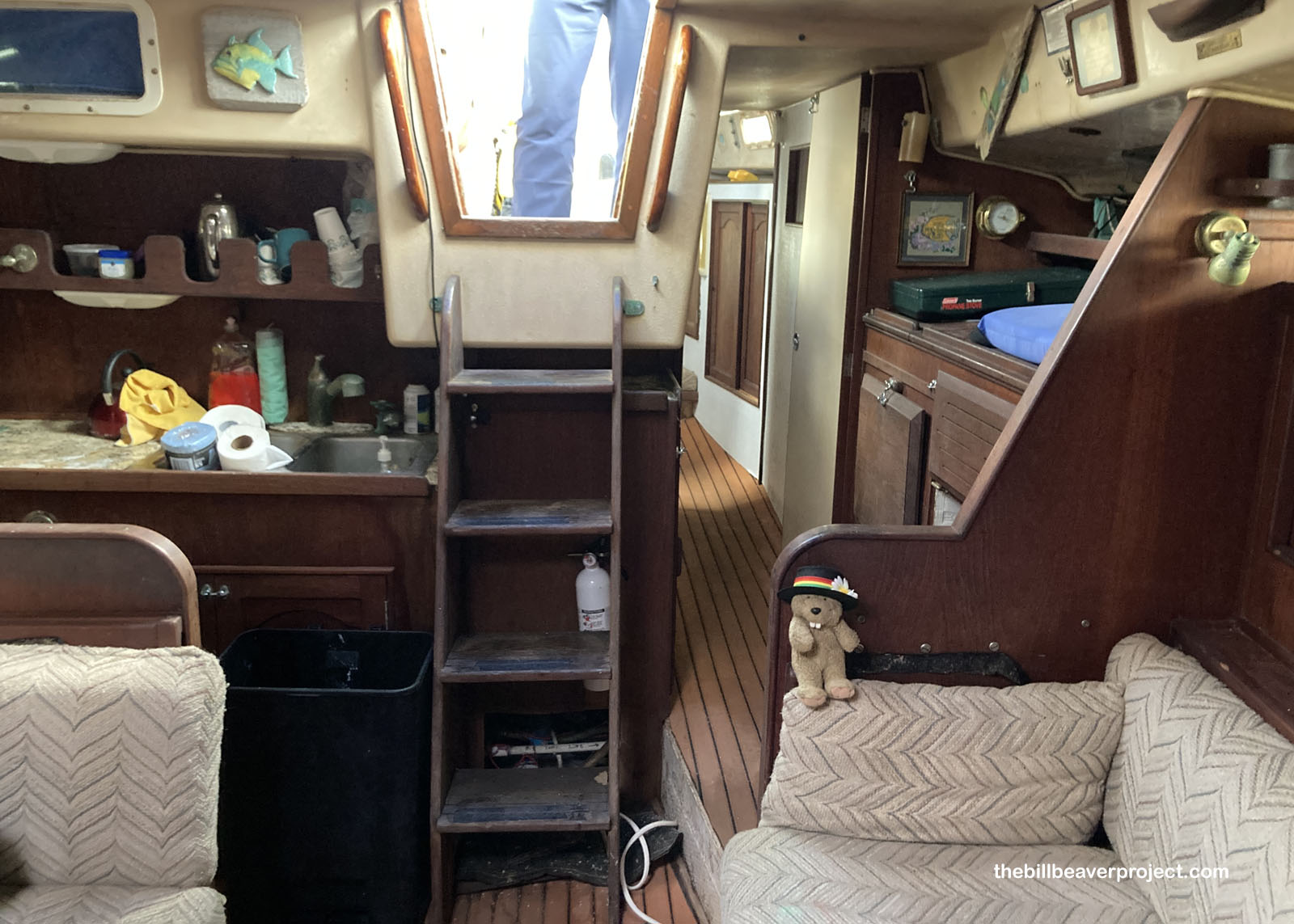 |
It was a long hour and a half to Coon Point on Elliott Key, one of the first in the long line of Florida Keys that end with Dry Tortugas! Unlike the bright blue yesterday, today between the splashes and the wind, it was pretty darn chilly! Nevertheless, as soon as we weighed anchor and Captain Castle gave the go-ahead, I was off on a paddle board to explore along the shore! The day may have been gloomy, but I was determined to find beauty wherever I could!
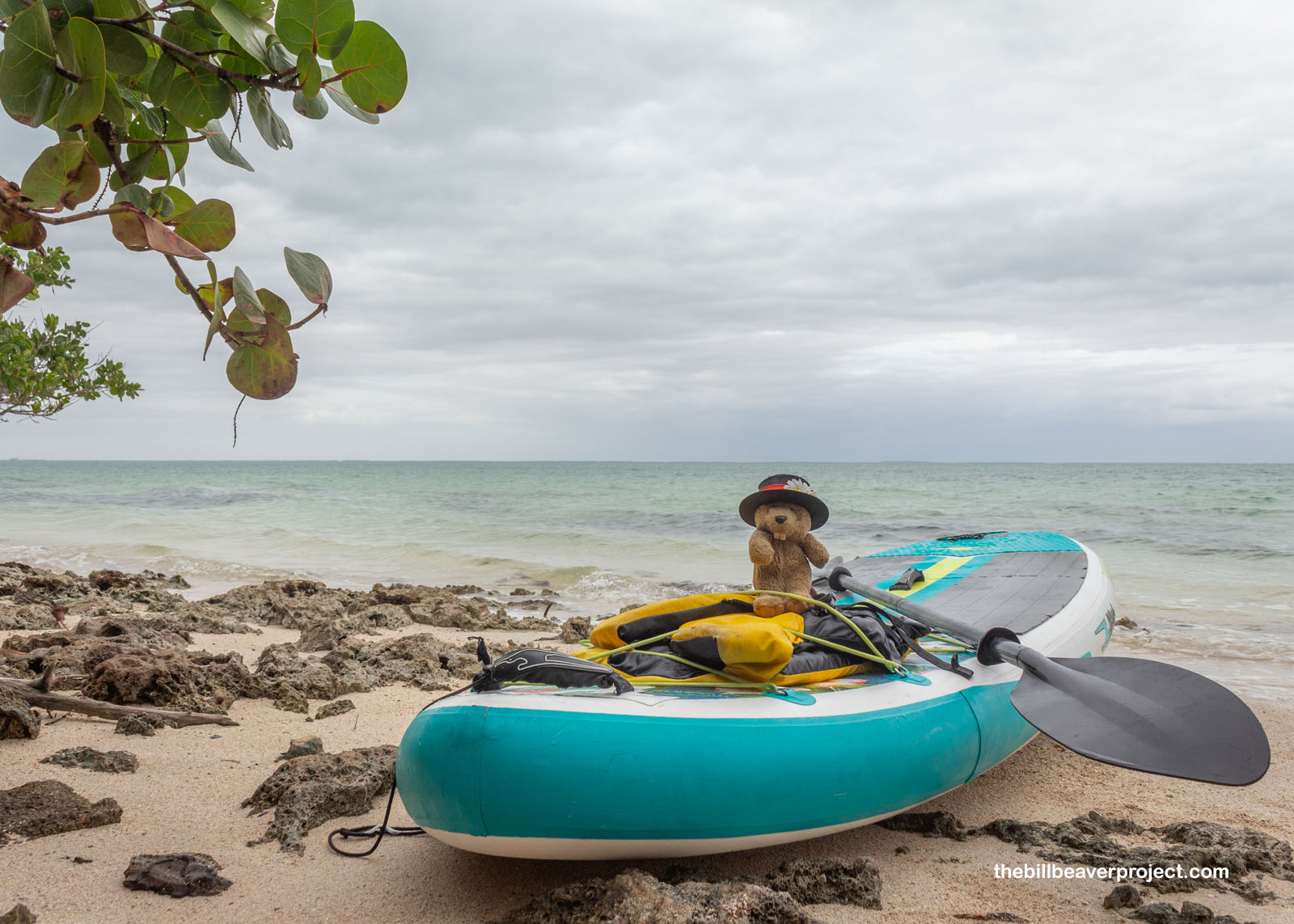 |
Coon Point was the perfect spot to illustrate what makes a key a key! Ancient coral was still sticking up above the sand, which the currents had gradually piled up over ages until it had created an island! From there, floating plants like mangroves made their way here and took root, creating a home for any animals that also wound up key-bound! Sadly, as I discovered in my wanderings, the currents have also filled Elliott Key with garbage from all the oceans of the world.
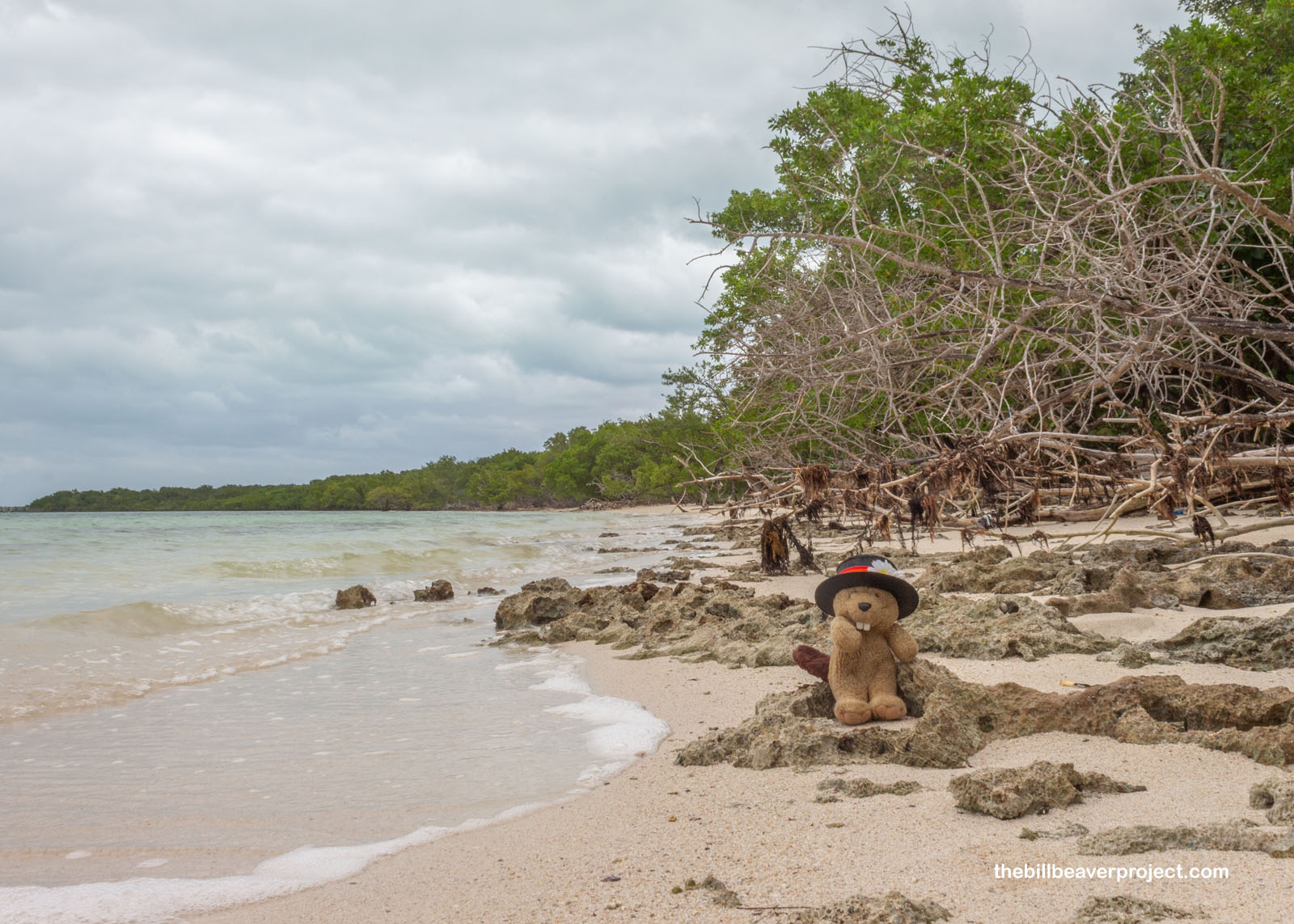 |
I had the whole beach to myself for a little while, so I set to wandering. That’s how I discovered how sharp and unforgiving the coral was! It really set a firm limit to beach wanderings, so while the kayakers caught up, I set off in the other direction to see what else there was to be seen.
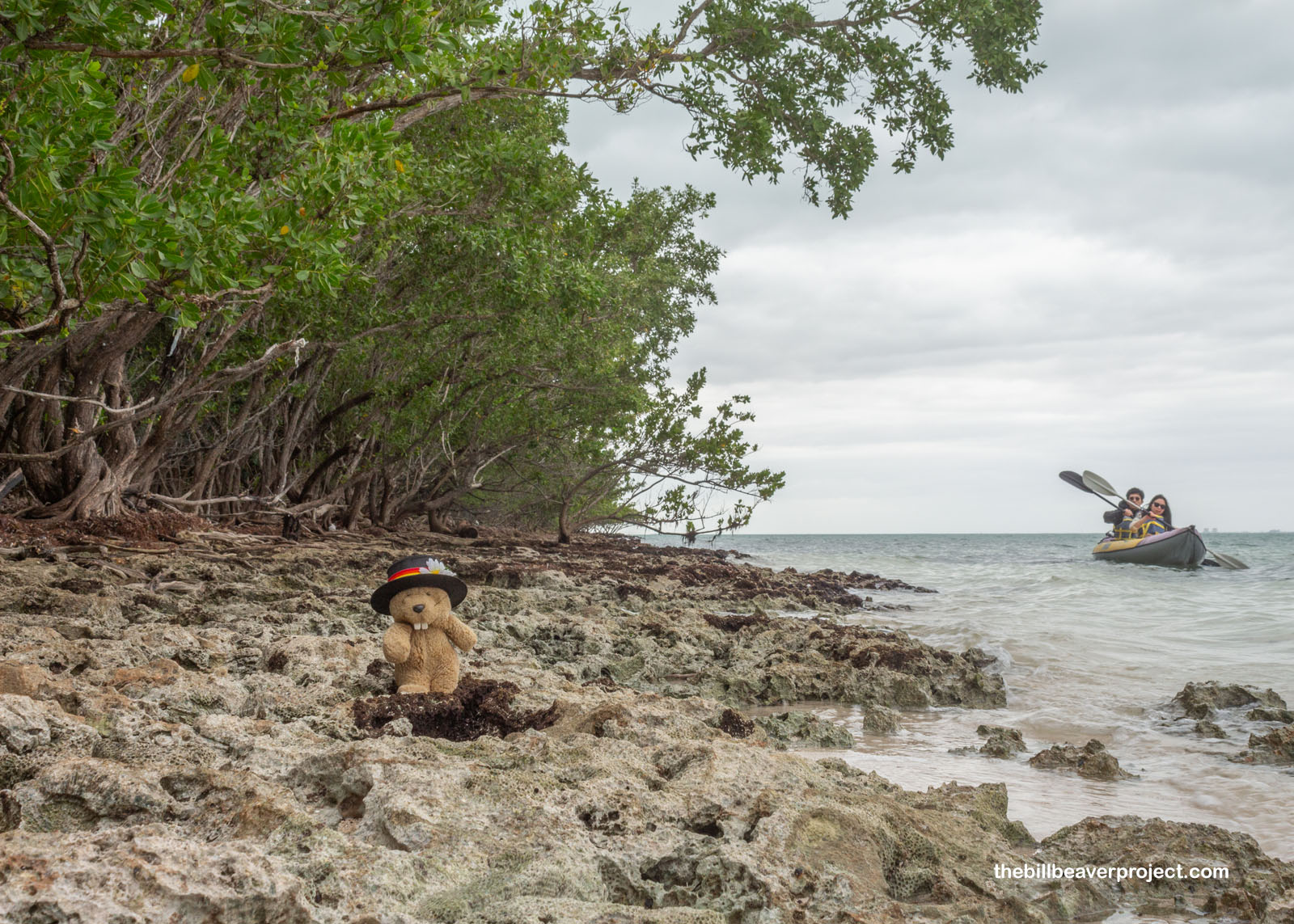 |
In all honesty, there wasn’t a lot! This beach at Coon Point was better suited for dragging out a blanket and having a picnic than doing much exploring. I found some neat, gnarly roots from a black ironwood tree, one of the more abundant trees on the key, but I did not see any Sargent’s cherry palms. Critically endangered after years of over-collecting, only one adult tree remains on Elliott Key, and it was not here!
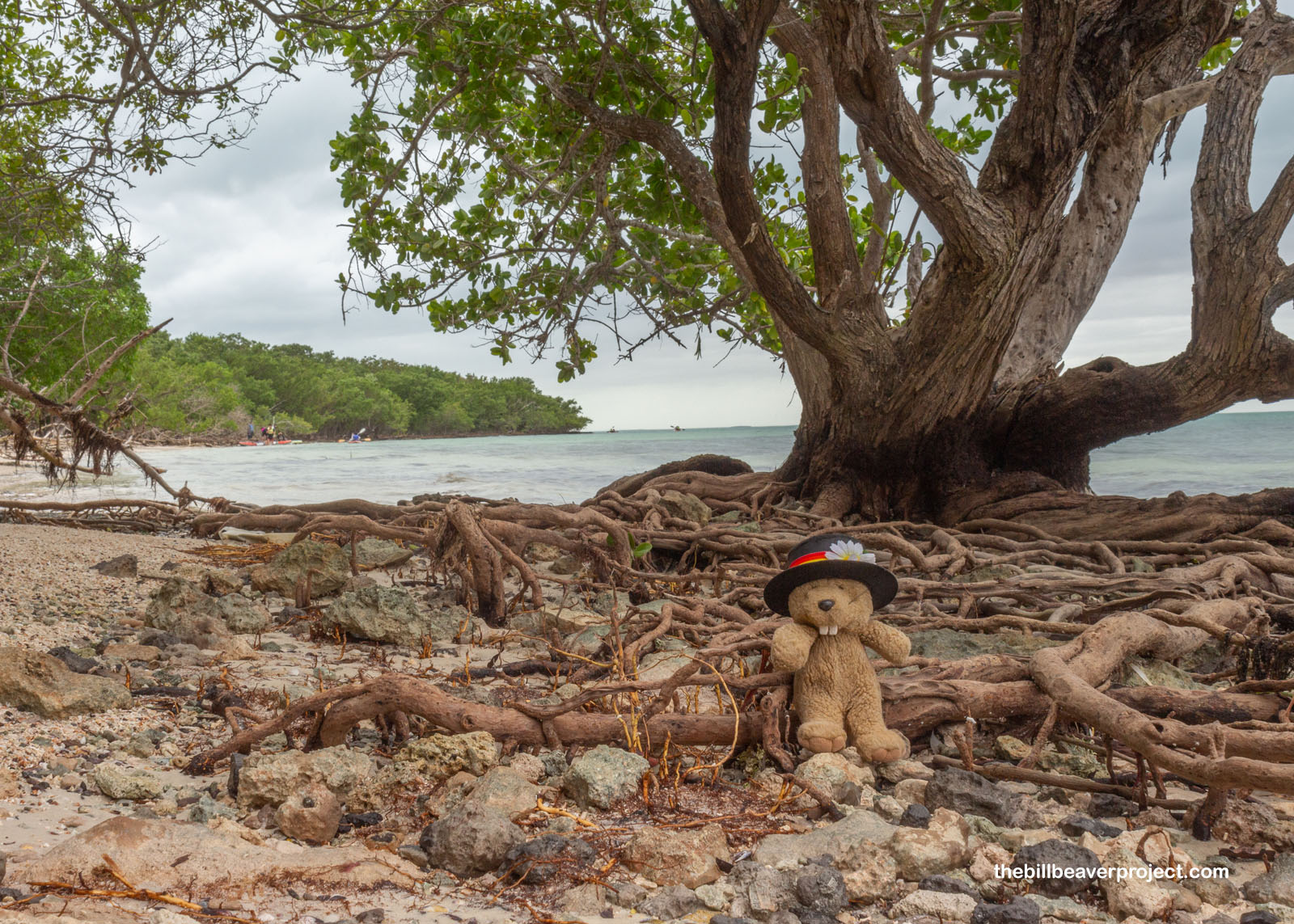 |
Elliott Key sure has gone through a lot over the years! In the late 1800s, homesteaders like the Sweeting family cleared away most of the native vegetation in order to grow pineapple, but it just took one hurricane in 1906 to deplete the soil and make pineapple growing impossible! Folks still flocked here, though, to grow fruits from key limes to avocados, and in the 1960s, they even tried to incorporate as a resort city called Islandia! Opposed by groups like the Audubon Society and Izaak Walton League, who wanted this to be a national monument, developers gave up, but not after bringing in a bulldozer and blazing the 7-mile “Spite Highway” down the center of Elliott Key! With national monument protections in place since 1968 and national park status since 1980, nature’s been making a recovery here on the keys of Biscayne Bay!
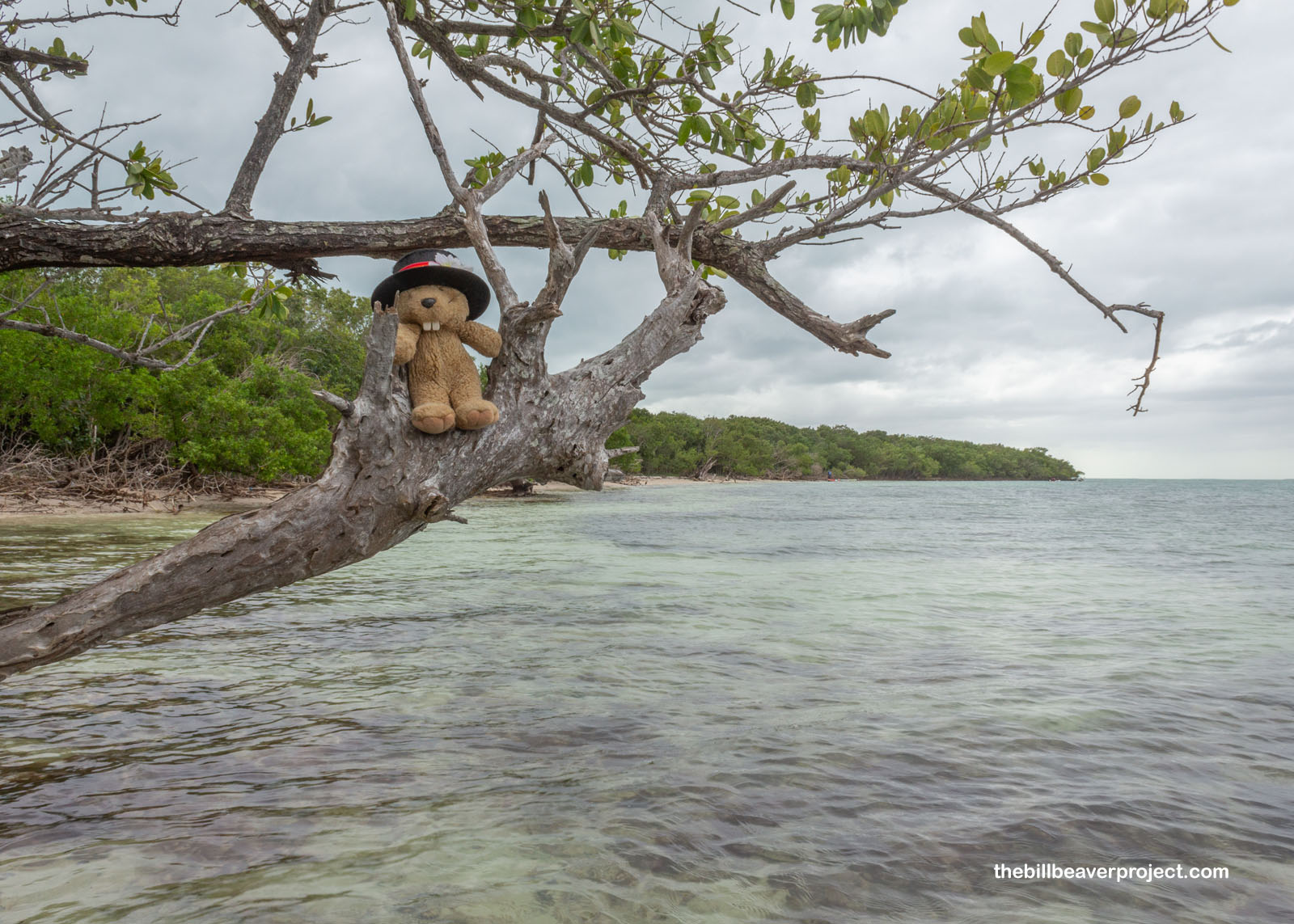 |
But I’d reached the limit of my topside explorations, and it was time to dip below the surface of Biscayne Bay! I’d spent the last year designing a dive suit to make it easier to take photos underwater, and now, after experimenting with plastics and fabrics, velcro and glues, the time had come to finally put it to the test!
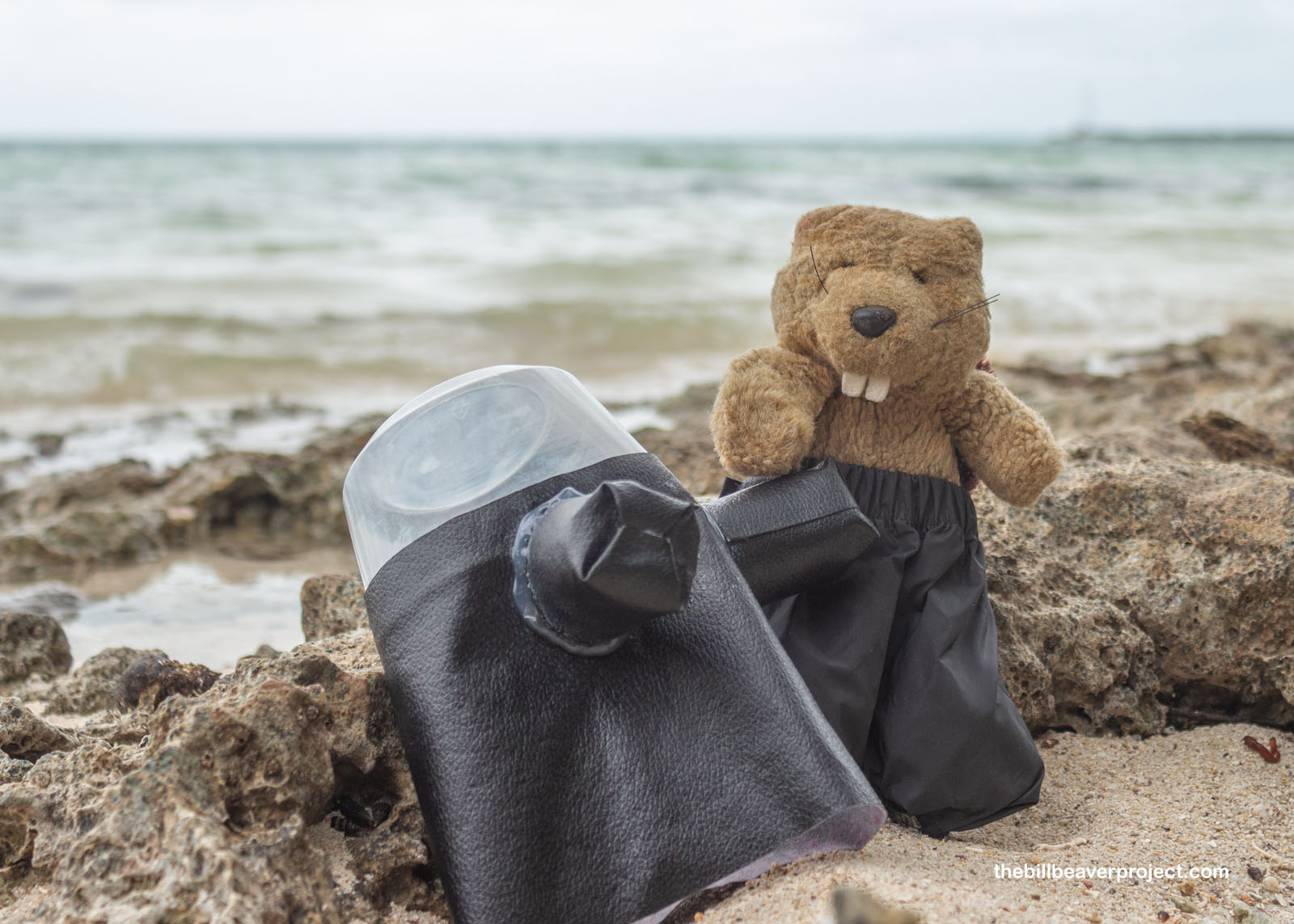 |
It was a nice start! Staying in sight of the Morning Dance, I drifted off to begin my exploration, wondering what marvelous reefs I’d encounter just under the surface. The really nice thing about being in a dive suit was that I didn’t mind in the slightest when it started to rain!
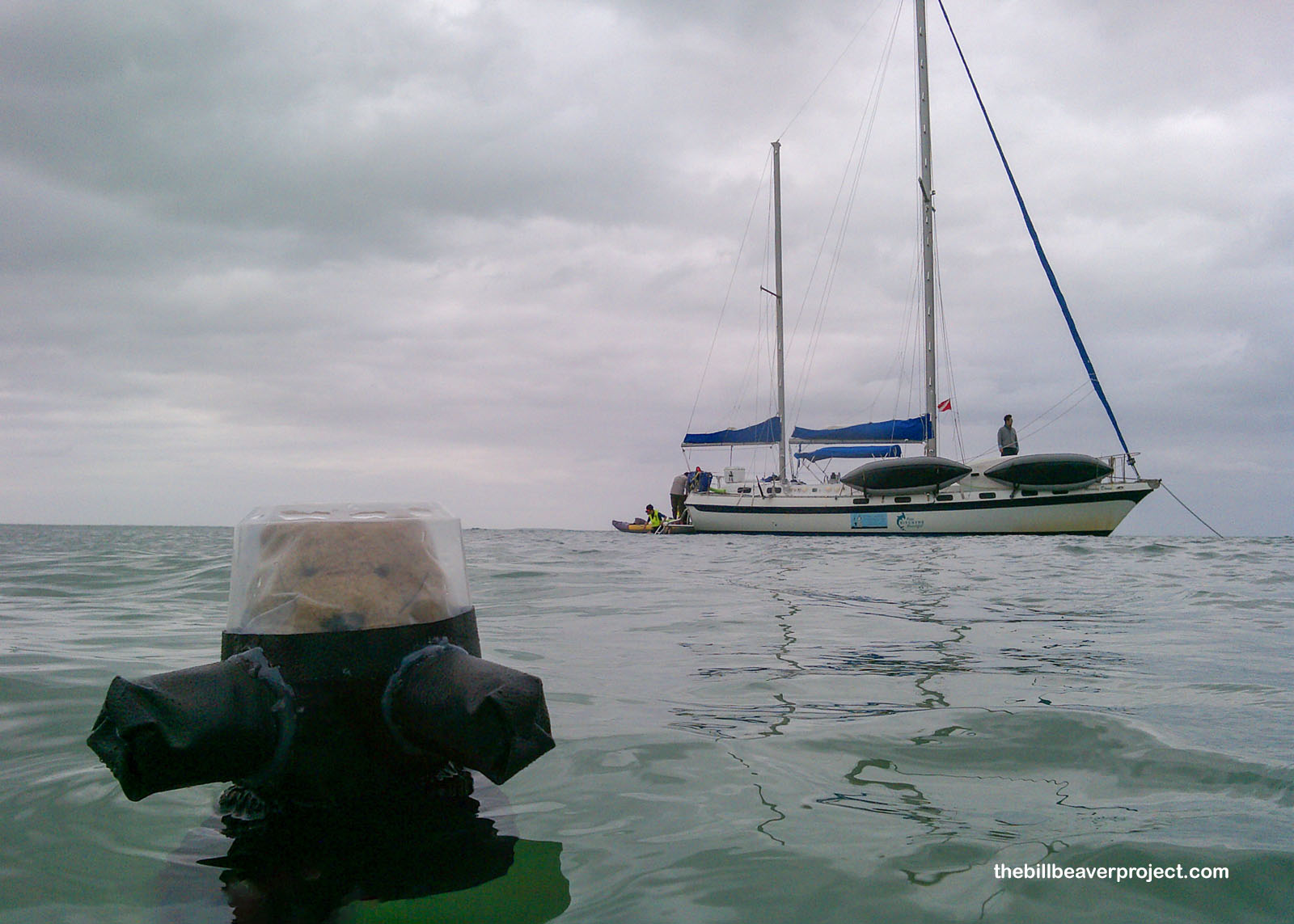 |
But what I did mind was that my dive suit was super-duper buoyant! The diving bell approach wasn’t going to work too well without a hose to cycle the air. Dang it! A big brown pelican on the shore was laughing at me as I bobbed along, adjusting my suit any way I could think of, and then, I figured, to heck with it. I let out the air and held my breath, the way I was meant to do!
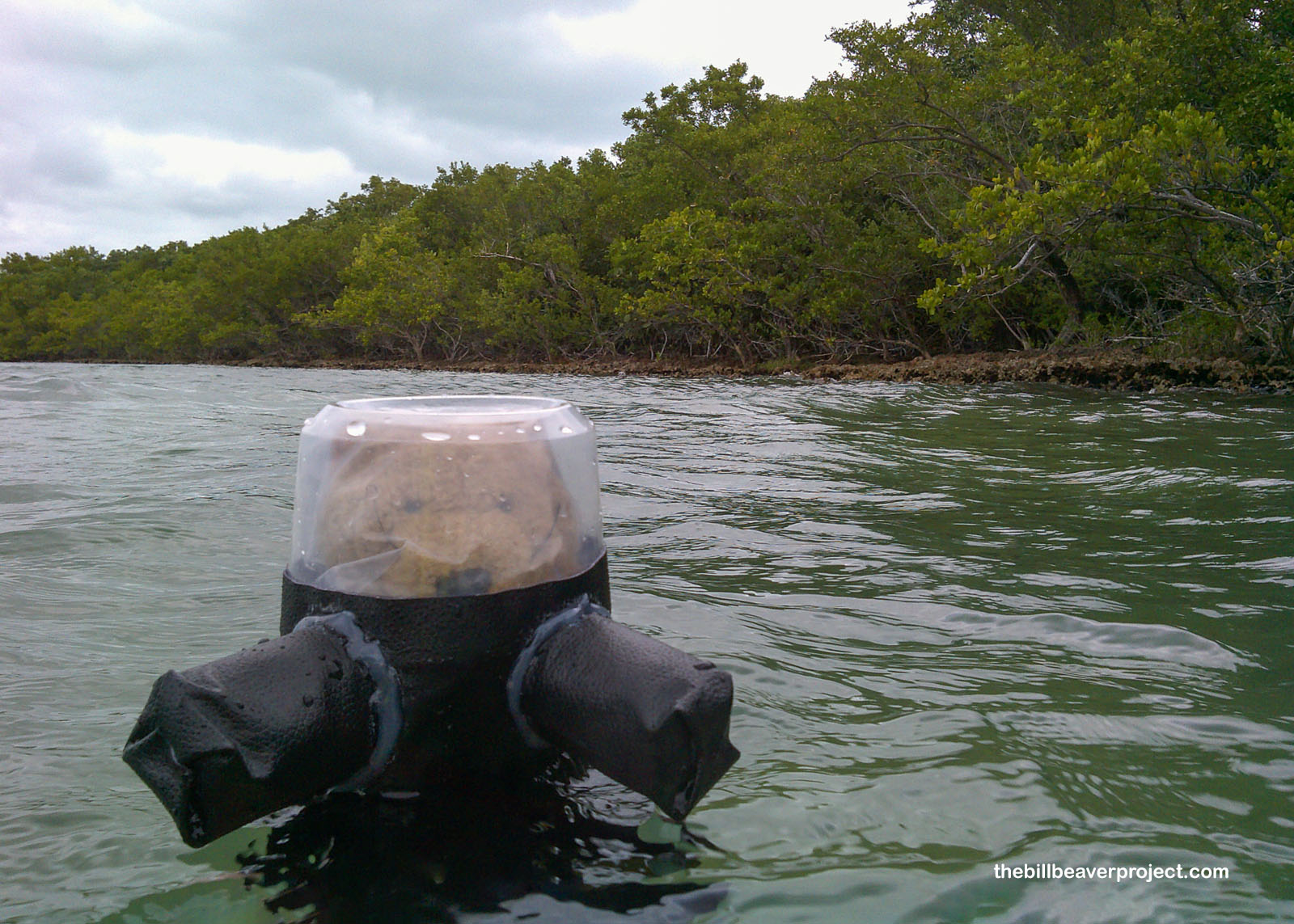 |
And boy was I surprised by what I saw: there was no reef at all! There was just a sandy bottom and some sea grass! A few fish drifted about, but by and large, it was a disappointing first dive! As I’d later find out, all the coral reefs are on the other side of Elliott Key! Plus, over a century of overfishing and collecting had left the ecosystem severely damaged, plus, as Captain Castle let me know, Florida has no special requirements for residents to get boats, so anyone can really be out here doing whatever they like as long as they don’t get caught. It’s a big bay by a big city, making it super tough to monitor!
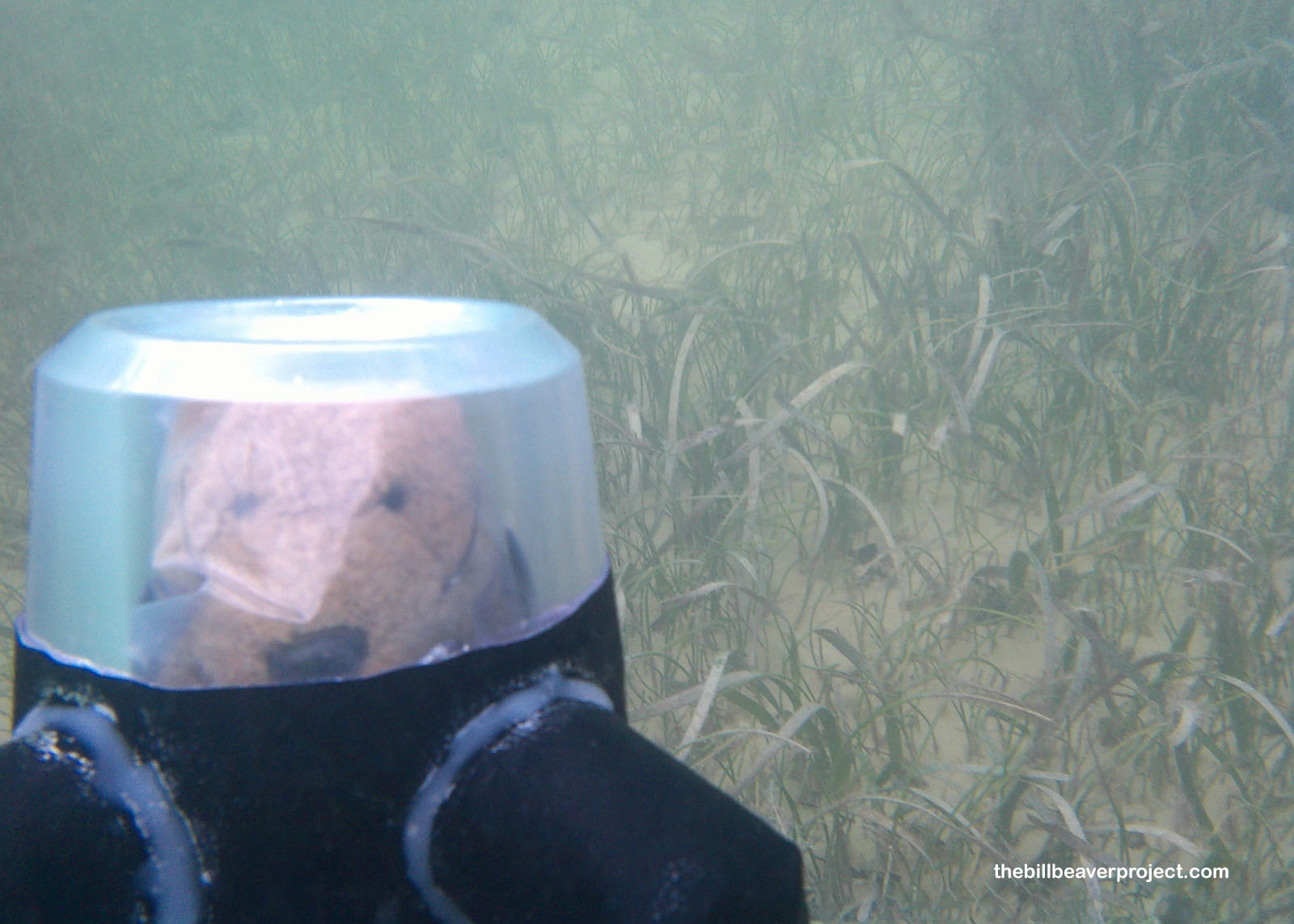 |
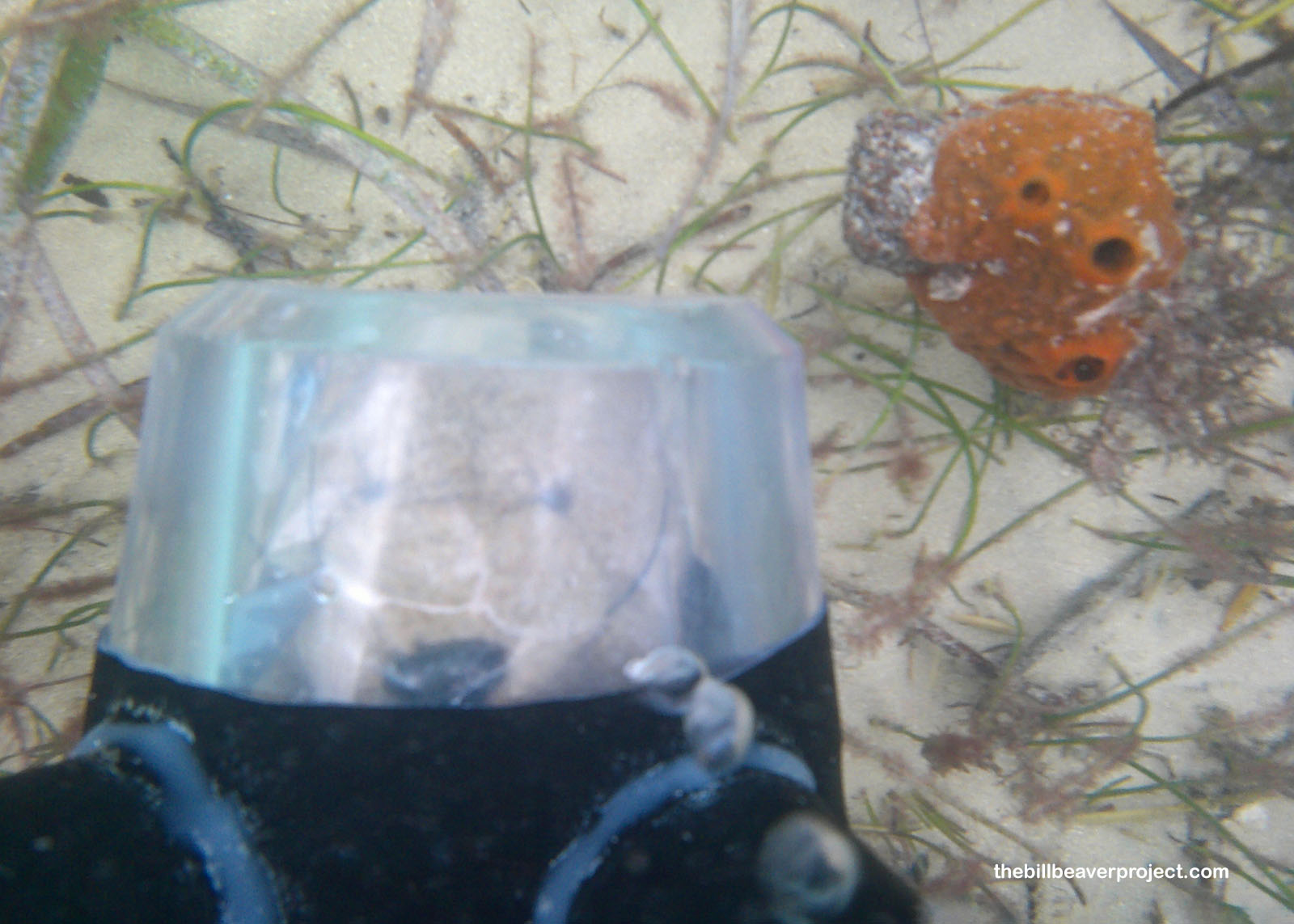 |
One of the biggest recoveries in the bay, since Biscayne became a national park, has been the sponges, like this Tedania (fire sponge). Super-important filter feeders, sponges in their natural state can filter most pollution out of Biscayne Bay every two weeks! Before synthetic sponges were invented in the 1940s, they were also harvested en masse as bathing and cleaning supplies, up to 600,000 pounds of them a year from Biscayne Bay! Today, demand has dropped by 90% and regulations mean spongers have to cut these rapidly regenerating invertebrates, rather than tear them off the bottom, allowing them to recover!
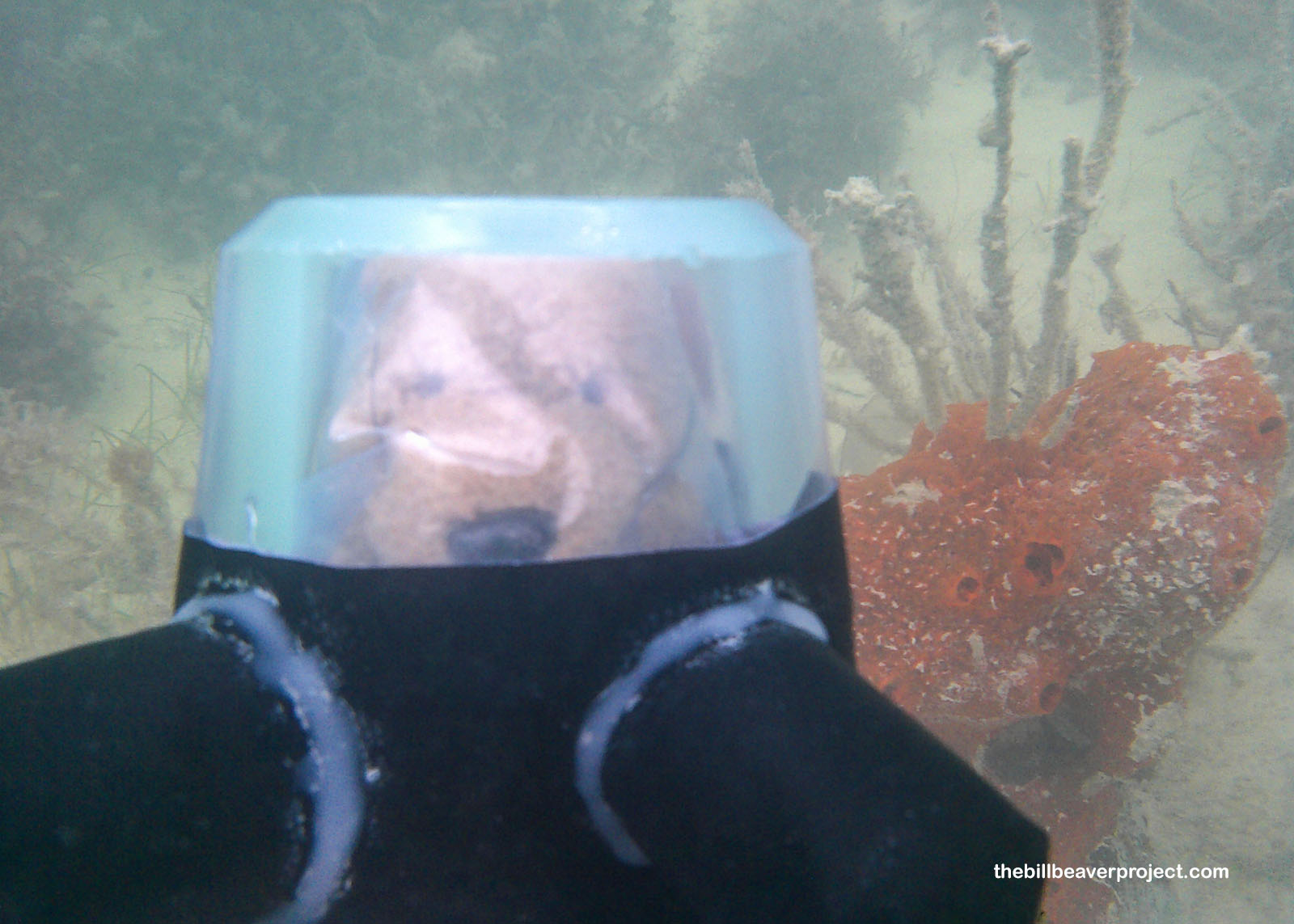 |
The fire sponge was truly the highlight of this first dive, so after about twenty minutes, I was back aboard the boat and ready to motor back to the mainland. For a while, Captain Castle stopped the motor and set the sail, which let us cruise across the bay at high speed in a steadily increasing, chilly wind! While we raced another boat ashore, we were too hasty: another boat had stolen the spot at the dock! So, we circled around, looking for crocodiles and anhingas before pulling ashore and concluding a wet and wild day! That’s it for me for now. I’m going to go dry off and warm up, but fear not! I’ll be back again first thing in the morning with more wet adventures in my final Floridian national park!
I’ll Bay seein’ ya later!

 Previous Day |
Total Ground Covered: 453.0 mi (729.0 km) |
 Next Day |
